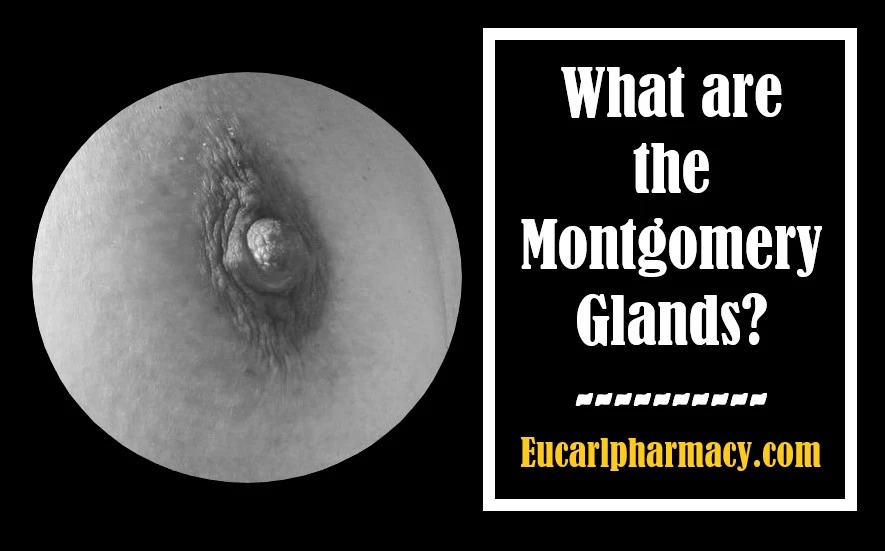What are the Montgomery Glands?
During pregnancy, some changes are experienced in the breast, especially the Montgomery glands. If you have ever been pregnant before, you might have noticed that your breast becomes sore and fuller. Aside from that, the areola becomes darker and there would be an appearance of a bump.
You might be worried that they might be harmful. Note that they are not harmful. They are sebaceous gland that helps to lubricate the areola during pregnancy. Montgomery glands become visible on the areola as a result of hormonal changes. In this review, you would get to know more about the Montgomery glands.
Montgomery Glands
Montgomery glands are harmless bumps that surround the nipple. They begin to swell during pregnancy. They can also be referred to as Montgomery tubercles.
Its function is similar to the sebaceous gland surrounding hair follicles, they produce oil for lubrication of the skin except for the dead tissues on the body. The amount on the nipple varies with the individual.

Why Do The Montgomery Glands Become Prominent?
Some conditions trigger the visibility of the Montgomery glands. When the surrounding temperature is lower than that of the breast, the Montgomery gland tends to be more visible. It will appear like a goose pimple that appears on other parts of the skin.
As a female approach the age of puberty, the increase in the hormonal level in the body(estrogen) increases the activities of the areola. This makes the Montgomery glands to be more prominent.
It can also be a pointer to pregnancy as it is expressed with the signs and symptoms of pregnancy. It becomes noticeable in some pregnant women and does not occur in some of them. It complements the other signs of pregnancy. When the pressure of the cloth is exerted on the breast, the Montgomery gland can become prominent.
Montgomery gland can also become prominent when the following are experienced:
1. Cancer of the breast
2. Fluctuation in body weight
3. Use of medication
4. Stress
Benefits of Montgomery Blands in Breastfeeding
The Montgomery glands play a huge role in pregnancy. As they are similar to the sebaceous gland in the skin, they secrete a wax-like substance that aids in lubricating the areola, and nipple and keeps the nipple supple.
The oils contain an antibiotic property to prevent infection. They also emit scents that attract the baby to suck the breast after birth. Research has also shown that the amount of the Montgomery gland determines how fast the baby latches on to suck the nipple.
The effect of harmful chemicals like detergent is reduced by the secreted oil. The areola should not be too dry to prevent injury to the area.
Infections of the Montgomery Glands
Infection of the Montgomery gland is identified by the presence of pain, swelling, and redness around the nipple. Examples of Montgomery gland infection include:
Mastitis
This occurs when one of the milk ducts becomes blocked especially in breastfeeding water. This can be suppressed with warm water but if it persists there is a need to notify the physician.
Galactorrhea
This is a type of nipple discharge but in galactorrhea, breast milk is discharged from the nipple without breastfeeding any baby. This can be caused by abnormalities of the pituitary gland or breast stimulation. It can occur in all ages, especially in women who have been pregnant before.
Intraductal Papilloma
This results in the discharge of blood as a result of the formation of a lump around the nipple.
Ectasis
Ectasis can lead to dilation of the milk gland. This can later lead to mastitis with pus discharged from the nipple.
Care of the Montgomery Gland
1. Avoid the use of artificial lubricant.
2. Do not pop the Montgomery gland as it may invite infection.
3. Avoid wearing a very tight bra instead, a comfortable one is preferable.
4. Monthly breast examination should be performed consistently. If you detect anything suspicious, do confirm with your doctor.
Frequently Asked Question
What is the Montgomery Gland?
Montgomery glands are harmless bumps that surround the nipple. They begin to swell during pregnancy. They can also be referred to as Montgomery tubercles. Its function is similar to the sebaceous gland surrounding hair follicles, they produce oil for lubrication of the skin except for the dead tissues on the body. The amount on the nipple varies with the individual.
Why Does The Montgomery Gland Become Prominent?
Some conditions trigger the visibility of the Montgomery gland. When the surrounding temperature is lower than that of the breast, the Montgomery gland tends to be more visible. It will appear like a goose pimple that appears on other parts of the skin.
As a female approach the age of puberty, the increased hormonal level in the body(oestrogen) increases the activities of the areola. This makes the Montgomery gland to be more prominent.
It can also be a pointer to pregnancy. It becomes noticeable in some pregnant women and does not occur in some of them. It complements the other signs of pregnancy. When the pressure of the cloth is exerted on the breast, the Montgomery gland becomes more prominent.
What Are The Benefits of The Montgomery Gland in Pregnancy?
The Montgomery glands play a huge role in pregnancy. As they are similar to the sebaceous gland in the skin, they secrete a wax-like substance that aids in lubricating the areola, and nipple and keeps the nipple supple. The oils contain an antibiotic property to prevent infection.
They also secrete scents that attract the baby to suck the breast after birth. Research has also shown that the amount of the Montgomery gland determines how fast the baby latches on to suck the nipple. The effect of harmful chemicals like detergent is reduced by the secreted oil. The areola should not be too dry to prevent injury to the area.
How Do You Care For The Montgomery Gland?
Avoid the use of artificial lubricant.
Do not pop the Montgomery gland as it may invite infection.
Avoid wearing a very tight bra instead a comfortable one is preferable.
Monthly breast examination should be performed consistently. If you detect anything suspicious, do confirm with your doctor.
Conclusion
The Montgomery gland becomes visible due to the physiological changes that take place in the breast. It shouldn’t be associated with any discomfort.
Any pain, redness, itching of the Montgomery gland, or discharge without breastfeeding is a sign of infection. In this case, care should be taken and your doctor should be informed about it for immediate intervention.






